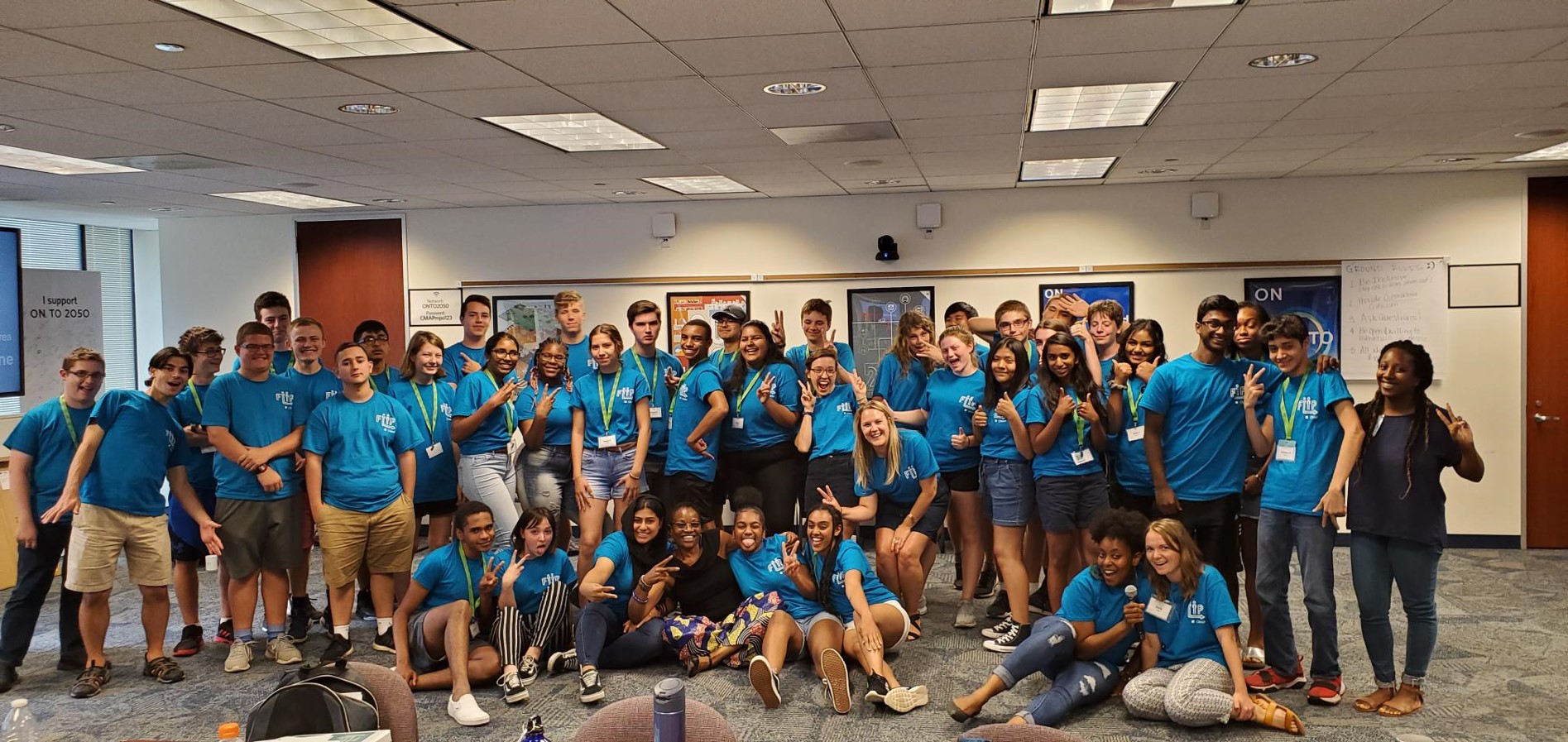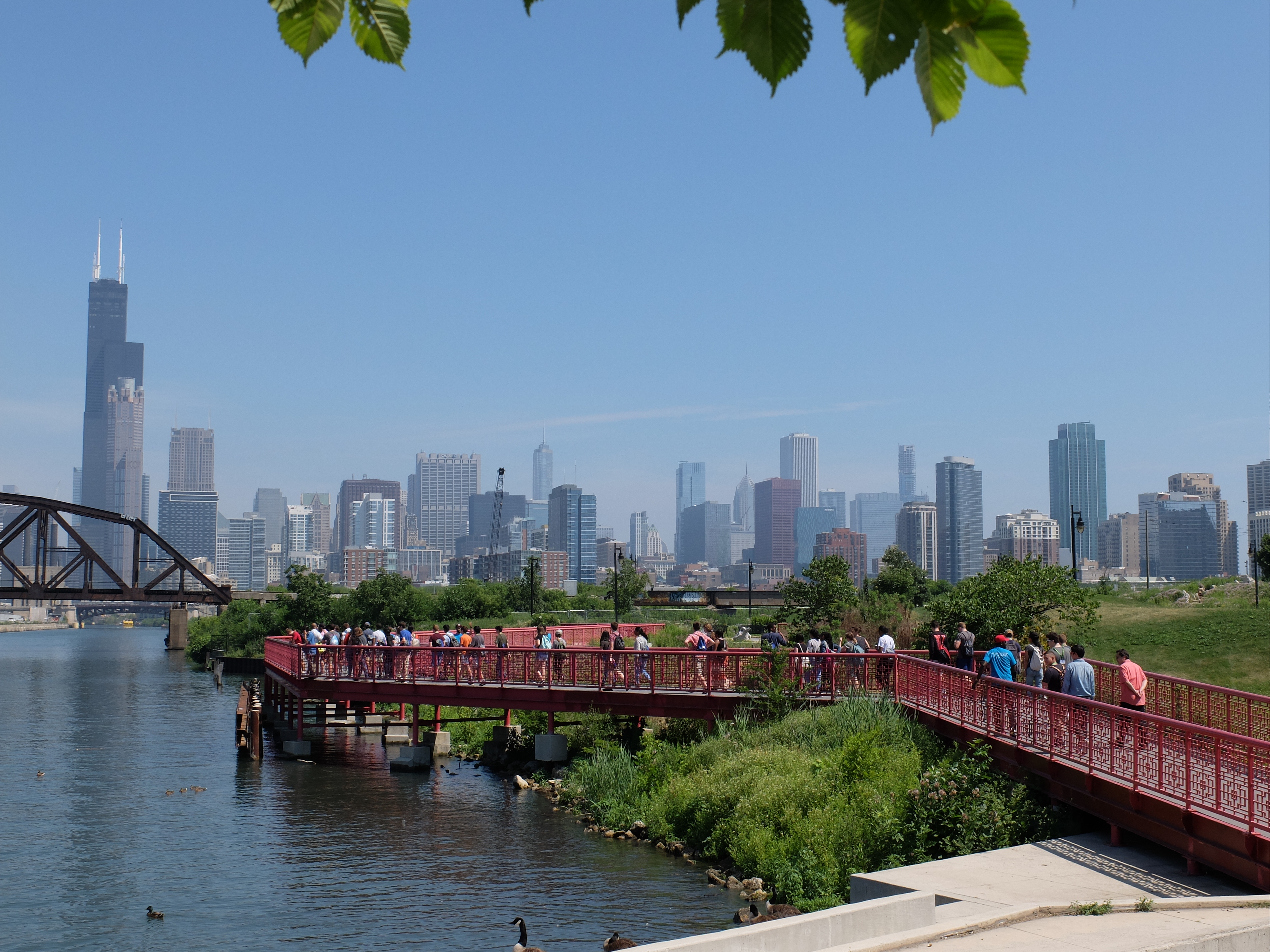
In July 2019, 43 students from Cook, DuPage, Kane, Kendall, Lake, McHenry, and Will counties participated in CMAP’s Future Leaders in Planning (FLIP) program. FLIP is a leadership development opportunity for northeastern Illinois high school students to learn about urban planning and contribute to a better future for the Chicago region. The weeklong FLIP program included field trips throughout the region, conversations with community leaders, and interactive activities to learn about transportation, site planning, and community engagement. On the last day of the program, students participated in an open house and debate to show their families what they learned during the week. This year’s students were excited to learn about how to better develop the region and its communities.
Day One
Monday began with icebreakers and an introduction to urban planning, CMAP, and the week’s focus on transportation. Erin Aleman, CMAP’s new executive director, introduced herself and answered questions from students eager to learn more about her career and the Chicago region.
Following lunch, students were divided into groups and set out for a scavenger hunt in the Loop. Students were tasked with a list of items to identify in the city, including modes of transportation, different types of businesses, and road and sidewalk conditions. This activity required students to look closely at the cityscape, and thus served as a fun and insightful kick-off for FLIP activities.
The students then participated in an activity to understand the various perspectives and stakeholders involved in urban planning. Each student was assigned a group that affects development in the mock city of FLIPville – city council, developers, residents, environmentalists, local business owners, and a community organization.
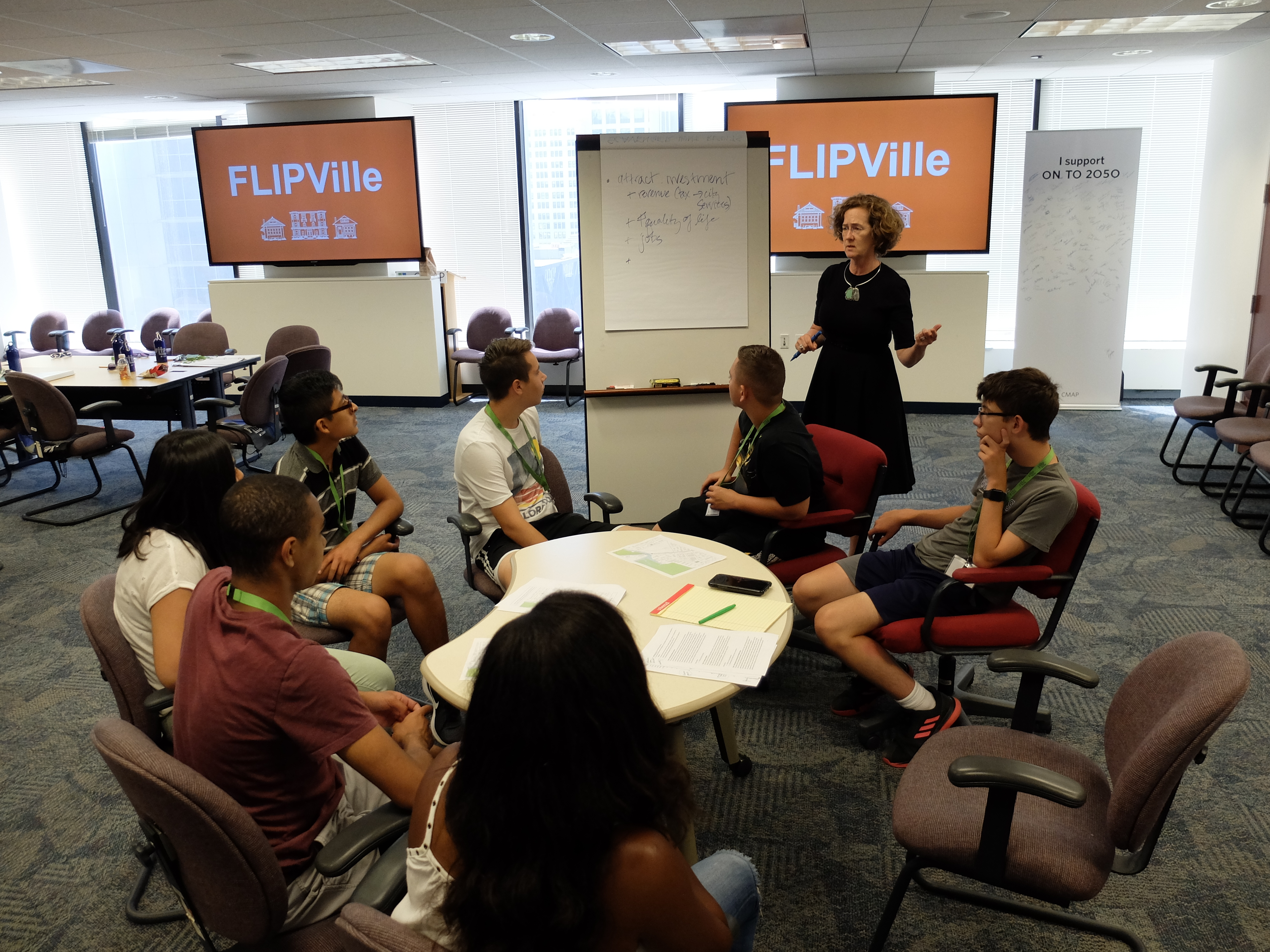
Day Two
On Tuesday, FLIP focused on site planning and transportation projects. The students took the Red Line south to visit the recently reopened CTA 95th/Dan Ryan station. There, students visited the station’s DJ booth, an art installation called “AESOP: An Extended Song of Our People” by acclaimed Chicago artist Theaster Gates.
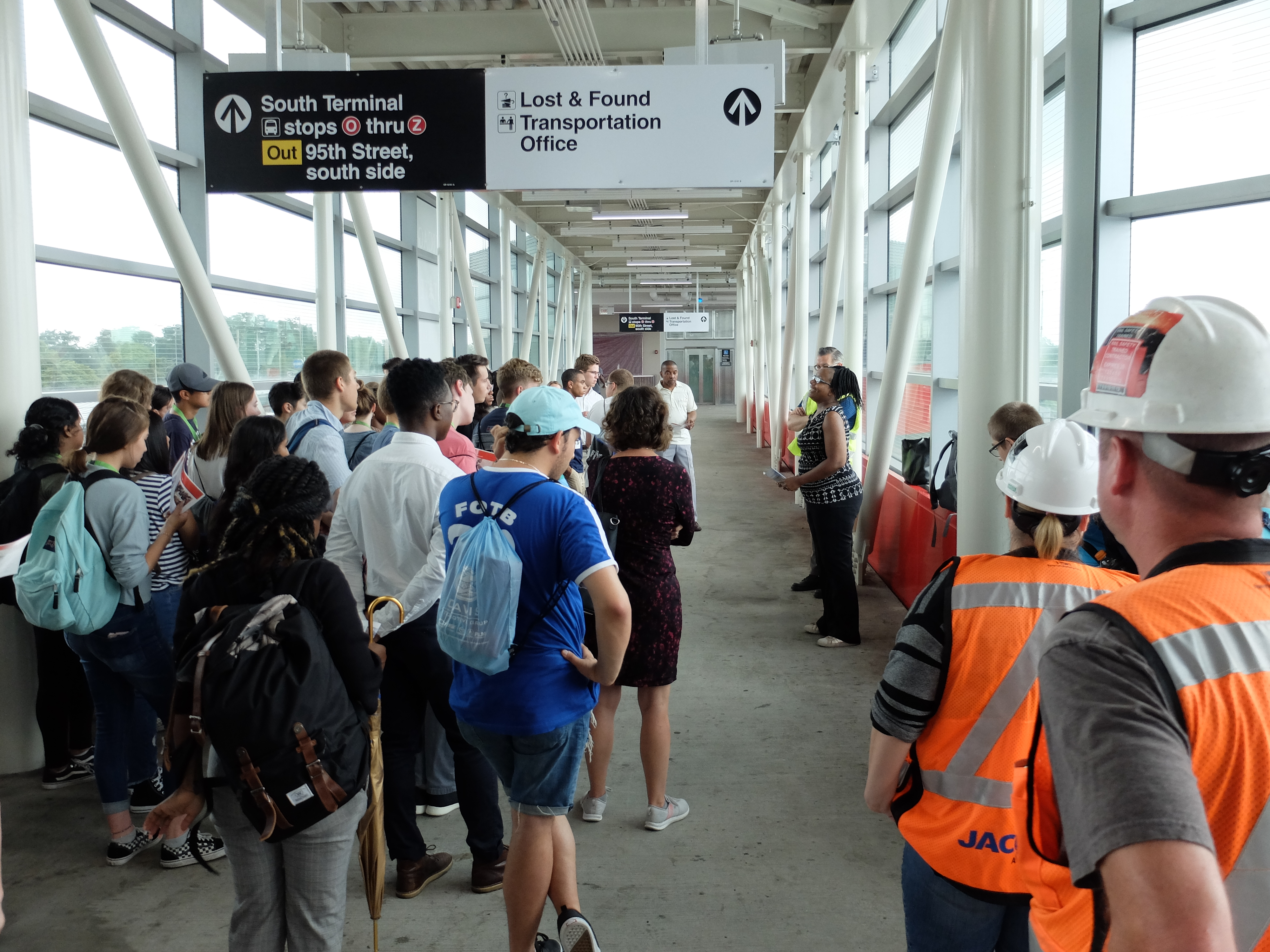
Kevin Loughnane, CTA’s vice president of infrastructure and maintenance, led a tour of the station. He shared anecdotes about the construction process of the new South Terminal over the Dan Ryan Expressway and the challenges faced during the build-out.
Next, the students spoke with Kendra Freeman of the Metropolitan Planning Council. Freeman talked about her organization, its involvement in the 95th station, and its process in engaging communities in urban planning projects. She introduced a parcel of land near the station that is currently owned by the CTA, but is foreseen as an important site for redevelopment.
Students then met Melvin Thompson, Executive Director of the Endelo Institute, who spoke about redevelopment efforts in Washington Heights and the West 95th Street Corridor. The group walked along the corridor toward the revitalized Woodsen Regional Library, taking note of the importance of neighborhood walkability.
After lunch at the library, students learned more about the community and worked to design and sketch their own plans for the CTA site near the 95th Street Station. The library also featured an exhibit on the Illinois Chapter of the Black Panther Party. Students explored the exhibit and were treated by an inspirational conversation with museum archivist Beverly Cook.
Day 3
On Wednesday, FLIP activities focused on the neighborhood level of planning with a visit to Chinatown. A trip via water taxi dropped the students off at Ping Tom Park where they toured the area with architects, Ernie Wong and Robert Sit of Site Design Group, who shared the history of the site, its inclusion of Chinese cultural features, and its role as a community meeting place.
The day also included a visit to the Chinese American Museum of Chicago and a conversation with Grace Chan McKibben, Executive Director of the Coalition for a Better Chinese American Community.
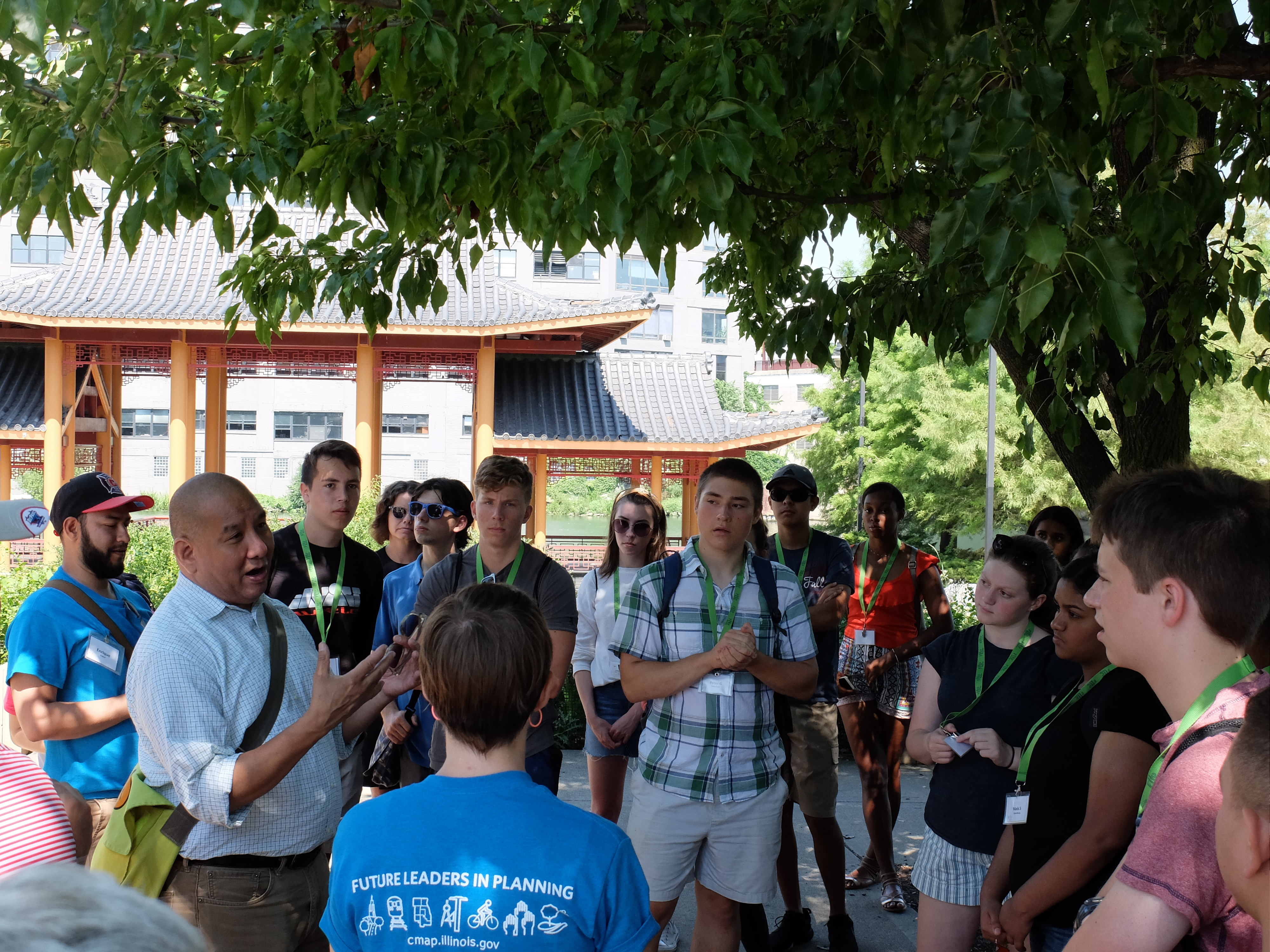
Day 4
Day 4 of FLIP focused on the municipal scale of planning. Students began the day with a presentation about the procedures for planning and approval in local government. The group then took Metra’s Milwaukee District North line train to Morton Grove. On the train, the students worked with their assigned groups to prepare for the final debate project on emerging issues in transportation.
In Morton Grove, students heard from local government leaders. Mayor Dan DiMaria spoke of his work to bring economic development to the village and highlighted the importance of planning and policy staff to achieving success. The students also talked with Dr. Saba Khan, who serves on Morton Grove’s Planning and Zoning Commission. Dr. Khan explained the importance of the commission and her responsibility in supporting equitable planning and development.
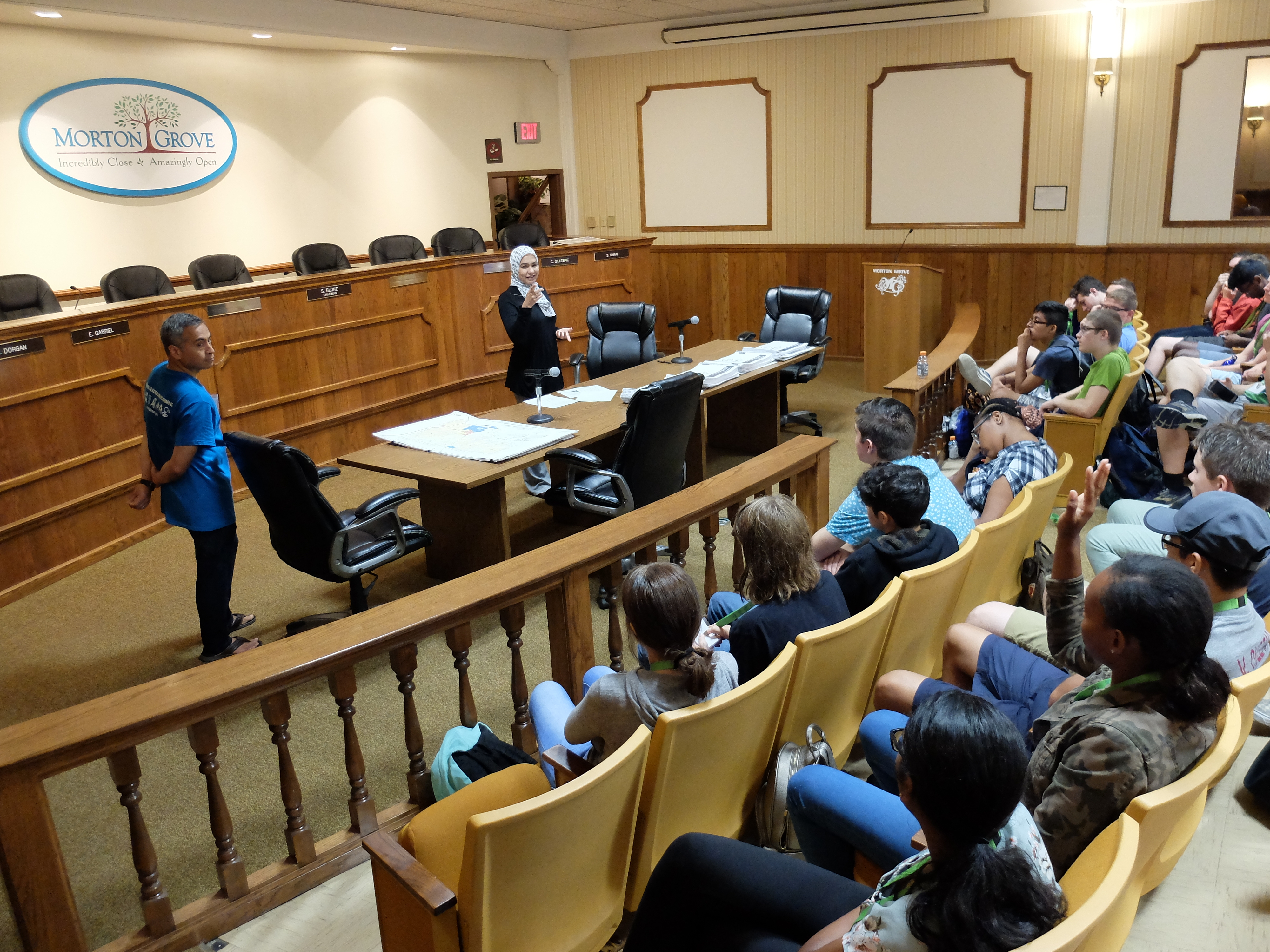
Students also spoke with Steve Andrews and Charlotte Obodzinski of Pace Suburban Bus. The two officials talked about the importance of bus transit and new improvements like rapid bus transit for the region.
On the way back to the train, students walked by a major commercial corridor in Morton Grove on Dempster Road and visited the future site of the Sawmill Station mixed-use development.
Day 5
On Friday, FLIP focused on freight transportation and the importance of community engagement in development. CMAP staff provided an introduction to freight and its critical role in shaping the past, present, and future of the Chicago metropolitan region.
The group took a trip to the Norfolk Southern Railway in Englewood where they received a guided tour from Laura Brooks, the Chicago Intermodal Division Manager. Students observed how an intermodal transit center functions and learned about the technical procedures of train transportation. Back at the CMAP office for lunch, where the students were joined by urban planning professionals for a ‘Lunch and Learn.’ Students ate and learned about the careers of people working at the City of Chicago, CMAP, Ecology and Environment Inc., JGMA Architects, the University of Illinois at Chicago’s College of Urban Planning and Public Affairs, and Borderless Studio.
The students then watched the documentary The Area, which tells the story of a black community being displaced by the expansion of Norfolk Southern’s expansion plans. The movie’s producer, Deborah Payne, joined for a conversation with students and shared her experiences as a local homeowner and activist in the community. The day’s activities highlighted how the region’s communities face both positive and negative consequences of development.
Day 6
The final day of the FLIP program was an open house for students to share their experiences and knowledge with family and friends. Parents met their children’s new friends, saw photos from the week’s activities, and learned more about CMAP’s staff and planning work.
The student groups then went head-to-head in debates. Having had time to prepare during the week, each group of students presented their perspective on an important transit question facing the Chicago metropolitan region.
To finish up the program, students and their guests enjoyed a lunch with CMAP staff to celebrate a successful 2019 FLIP program.
